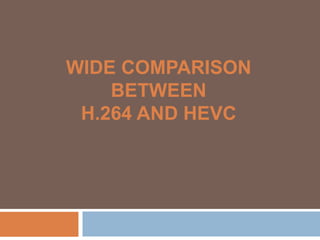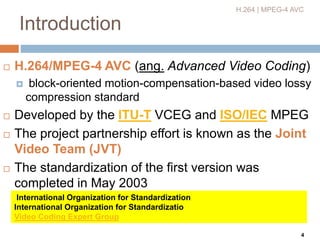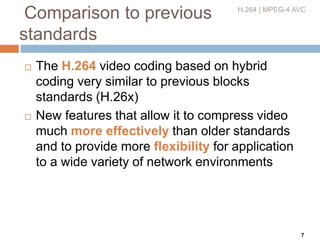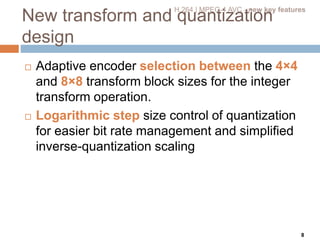H.264 and HEVC are video compression standards. H.264 was developed in 2003 as an improvement over prior standards, allowing video compression at half the bit rate with the same quality. HEVC was developed in 2013 to replace H.264, providing around 50% better compression efficiency through features like larger block sizes, more intra-prediction modes, and adaptive transform sizes. The document provides details on the coding structures, prediction methods, and other techniques used in each standard.








































